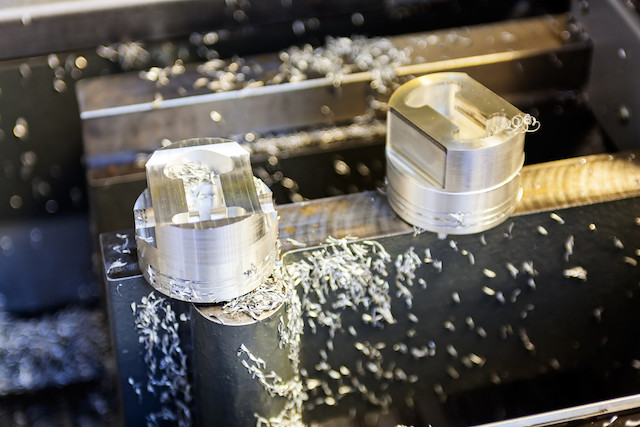
Are you asking yourself the question “What is precision machining technology?”
Precision machining technology is an important aspect of modern manufacturing. It involves the use of advanced techniques to create precise and intricate components. It plays a vital role in various industries, including aerospace and automotive.
Are you ready to learn about precision machining? Keep reading for more information.
Precision machining technology refers to the field of manufacturing that involves the use of:
Manufacturers will use these to shape, cut, and fabricate materials with exact specifications. Precision machining technology encompasses a range of processes, including:
They are carried out using cutting-edge machine tools and computer-controlled systems.
Precision machining relies on a number of tools and equipment to achieve accurate and precise results. These tools cut, shape, and refine materials with utmost precision.
Let’s take a look at some of these tools.
Cutting tools are crucial components in precision machining. They include a range of tools such as:
End mills are for milling operations and come in various types, including:
Drills are essential for creating holes in pieces and are available in different sizes. Inserts and tool holders are used in turning operations and enable efficient cutting of materials.
These cutting tools are made from high-speed steel (HSS), carbide, or ceramic materials. It ensures durability and precise cutting performance.
CNC machines (Computer Numerical Control) have revolutionized the precision machining industry.
These computer-controlled machines provide exceptional accuracy and repeatability in machining operations. CNC milling machines can perform complex milling operations with multi-axis movements.
CNC lathes are used for turning operations, producing cylindrical components with precision. CNC machines use programming like CAD/CAM software. It allows operators to execute precise machining operations automatically.
Workholding devices are for securing pieces during precision machining processes.
Vises are versatile and provide a stable grip on the workpiece. Allowing for precise positioning and alignment.
Clamps come in different forms and are used to hold workpieces securely in place. Chucks are primarily used in lathe operations, providing a firm grip on the rotating workpiece.
These workholding devices ensure stability and rigidity during machining. They prevent any unwanted movement or vibration that could affect the accuracy of the final product.
The following techniques in precision machining showcase the advancements and innovations in the field. These techniques contribute to the production of high-quality components and parts.
CAD and CAM (Computer-Aided Design and Computer-Aided Manufacturing) are integral to precision machining. CAD software enables engineers and designers to create detailed 3D models of parts.
CAM software translates these 3D models into machine instructions. It guides CNC machines in the manufacturing process.
High-speed machining (HSM) is a technique that involves machining at a higher cutting speed than other methods.
HSM uses advanced CNC machines with high spindle speeds and rapid tool movements. This is combined with optimized cutting strategies.
This technique:
HSM also reduces tool wear and extends tool life, resulting in cost savings and increased productivity.
EDM (Electrical Discharge Machining) is a non-traditional machining technique. The technique uses precise and intricate shaping of conductive materials.
It involves the use of electrical discharges between an electrode and the workpiece. This erodes the material and creates the desired shape.
EDM is particularly useful for hard materials. These materials are challenging to machine with conventional cutting tools. It enables precise machining of complex contours and delicate features while maintaining tight tolerances.
Laser machining uses focused laser beams to cut, drill, or engrave materials with extreme precision. The high-energy laser beam vaporizes or melts the material, resulting in precise and controlled removal.
Laser machining is commonly used for fine and intricate work, such as:
It offers high accuracy, minimal material distortion, and the ability to work with various materials.
Precision machining technology finds extensive applications across various industries. Let’s take a look at the different industries.
The aerospace industry demands precision and reliability in the manufacturing of components. This is due to stringent safety and performance requirements.
Precision machining plays a vital role in producing critical aerospace parts such as:
The industry relies on precision machining to achieve the parts necessary for:
Precision machining is used in the manufacturing of:
Precision machining techniques are also used in the production of molds for part manufacturing. The molds are reusable, allowing for efficiency and quality in the industry.
Precision machining is integral to the electronics and semiconductor industries. This is because miniaturization and high precision are essential.
Precision machining is used in the fabrication of electronic components, such as:
The machining of small, intricate features with precise tolerances is critical for the production of:
Precision machining technology has become an indispensable part of the manufacturing industry. It enables the production of high-quality components with exceptional precision and accuracy.
Through the use of advanced techniques like CAD/CAM, precision machining continues to drive innovation and improve efficiency in various sectors.
Precision machining is expected to play an even more significant role. It can contribute to the development of cutting-edge products and shape the future of manufacturing.
Now that you know the answer to “What is precision machining technology?” Are you looking for precision machining services? Contact us today!